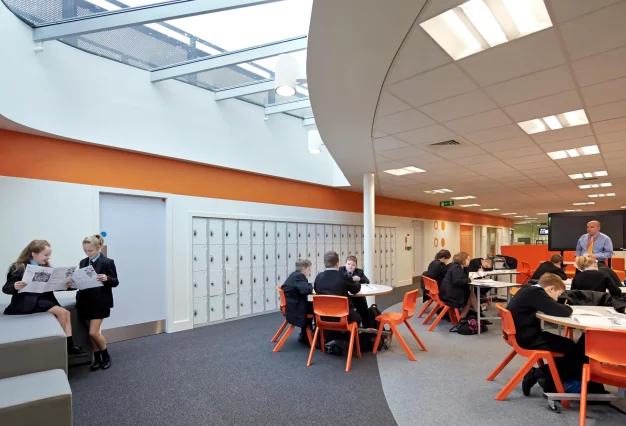A 2023 report from the National Audit Office estimated that 700,000 students in England are learning in schools that the Department for Education believes require major rebuilding or refurbishment.
These rebuilding programmes have promised to produce state-of-the-art schools. But I believe that the focus in the UK is still too much on the condition of the building, rather than the approach in countries like Finland where the focus is on the relationship between school design and teaching and learning practice.
In Scotland, recent figures highlight that 91.7 per cent of school buildings are in a “good/satisfactory” condition, and 92.0% of pupils are now educated in school environments rated as “good/satisfactory” condition. Here, condition refers to the state of the school fabric – such as state of, the appropriateness of the design, and the health-and-safety requirements, says Edward Edgerton from the University of the West of Scotland.
In the past, researchers have questioned whether there is any need to go beyond this minimum standard and suggested that schools might not need to be any more than adequate.
I believe there should be higher aspirations for the UK’s school estate. To understand why, we need to think about the role of the school environment. It is much more than simply providing a safe, weatherproof building for teaching children and young people.
Many studies have shown that teaching and learning activities can be impaired by environmental characteristics such as noise, ventilation, colour and furniture arrangement.
However, there is disappointingly little research that explores the whole school environment, how it is experienced by students and how it relates to important outcomes, such as exam results.
There are some notable exceptions. A report on primary schools in England, conducted by researchers from the University of Salford in 2015, showed that well-designed classrooms can boost children’s academic performance in reading, writing and maths.
A few aspects were of particular importance. They included naturalness (the light, temperature and air quality), individualisation (classrooms with varied floor plan shapes and breakout spaces, along with elements that pupils can personalise such as coat pegs) and stimulation (appropriate levels of complexity in use of colour and wall displays).
Student experience
My own research with colleagues on secondary schools in Scotland showed that there were substantial improvements in students’ feelings of security and small improvements in behaviour and motivation for learning in newly built schools.
We found that these improvements were long lasting and were not due simply to the effect of their novelty. The improvements in feelings of safety and security seem to be linked to features such as more spacious corridors and staircases with natural daylight and good locker facilities.
We also found that how students experience and evaluate their school environment is related to their academic performance. Students with more positive perceptions of their school environment have better academic performance. This is especially true where pupils feel positive about the physical comfort of the social and teaching spaces in the school.
School rebuilding programmes provide a unique opportunity for educational experts, environmental psychologists and design professionals to collaborate to find out what works and why.
The need to recognise and learn about the role of school buildings in the education process is only likely to increase as we accommodate more students with additional support needs in mainstream schools and strive to create inclusive schools that respond to needs of neurodiverse students.
The government’s ambition for school rebuilding should go beyond simply fixing crumbling schools. As well as supporting learning and teaching, schools should provide an environment that encourages young people in their social development and aims to give them the best start in life possible.![]()
Edward Edgerton, Reader in Psychology, University of the West of Scotland
This article is republished from The Conversation under a Creative Commons license. Read the original article.





